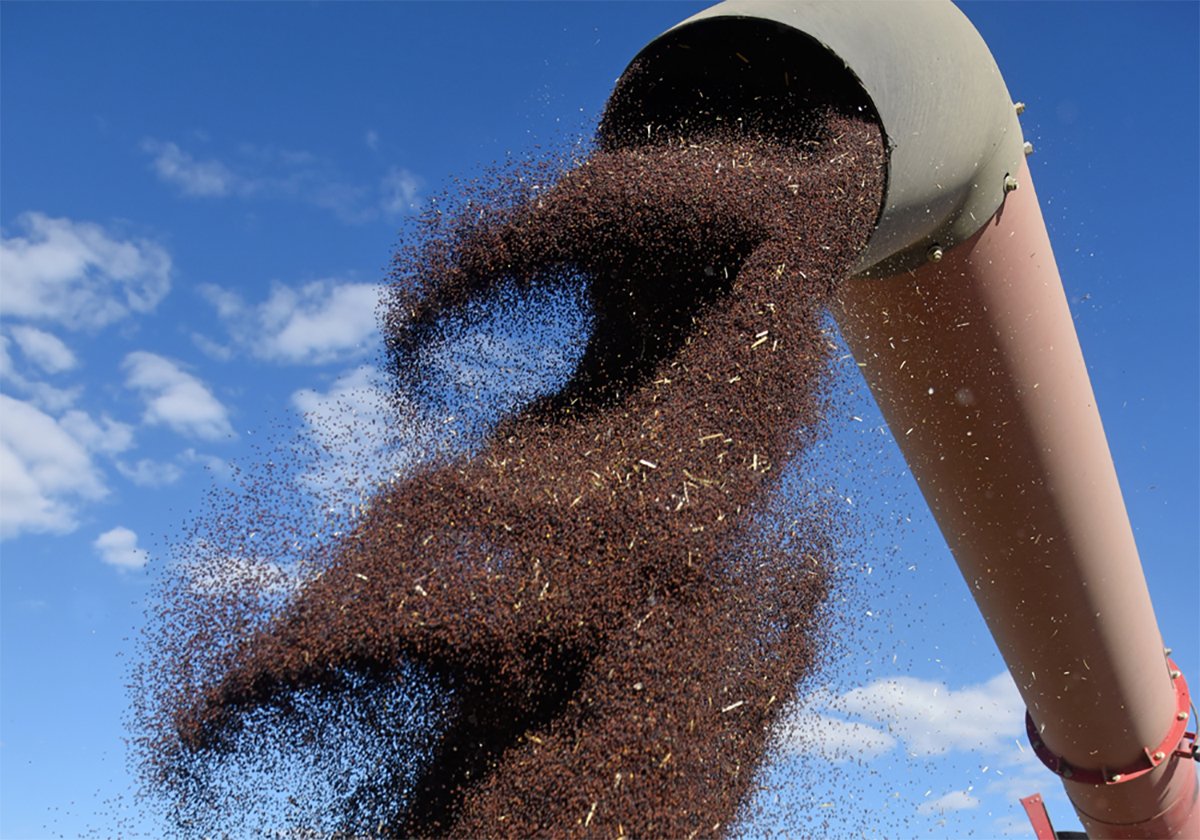Ed Shaw stands on a hilltop field of golden canola stubble overlooking a marshy creek flowing through a ravine below.
A special conservation program being tested in his area means that the green parts, not just the gold, are generating returns for his operation.
Money he receives through the Alternative Land Use Services program – up to $25 an acre – helps relieve economic pressure that might force him to plow down every square inch of his land.
“It’s paying my taxes, basically. That’s the way I look at it,” he said.
Read Also

Ag minister says tariff situation with China is fragile, volatile
Agriculture ministers from across Canada said they heard canola producers’ concerns about tariffs but it seems unlikely they can do much about them.
Last year just before Christmas, Shaw received a cheque for $2,050 for preserving 132 acres of wetlands and ecologically sensitive areas on a section of land he bought seven years ago in the Rural Municipality of Blanshard, about an hour northeast of Brandon.
In exchange for the ALUS payments, he has stopped cropping the steep hillside that drains into the pothole below and has seeded it to grass.
With land taxes in the RM amounting to about $700 per quarter section, the money encourages him to leave the stands of poplar and dogwood for the deer, and the bogs to the ducks.
In the second year of a three year pilot project in Blanshard, ALUS rewards farmers for using land management practices that preserve the environment and biodiversity.
The program is voluntary and is being closely watched to gauge farmer participation and to help determine if it could be instituted nationally.
Another farmer in the area, Cam Henry, noted that since the region was settled in the 1880s, the driving principle of farming has been to “knock down the bush and drain the sloughs.”
The reason is simple, he said.
“We are taxed on those lands that don’t produce anything. Also, as land becomes more valuable, you look at intensifying the use of the land you own.”
He said thin profit margins often force farmers to do what’s necessary to survive.
“A large operation using more technology, less people and bigger equipment does not lend itself to smaller, broken up pieces of ground. If these things are going to stay in society, there are going to have to be incentives for producers,” he said.
With larger farms there is a great temptation to remove obstacles, such as trees and swamps to ease manoeuvring of heavy equipment, he said.
“With GPS auto-guidance systems, you set a navy line and it takes you from one end of the field, or to the next pothole and the next bush, and then you have to drive around it. There’s a sense of, ‘Man, I’d like to go straight through.'”
According to Steven Hamm, local project manager, the program signed up 168 landowners in the first year, or 75 percent of the total in Blanshard, covering almost 21,000 acres out of 138,000 in the RM.
Manitoba Agricultural Services Corp., backed by the provincial government, administers the program and paid out $294,000 in 2006. Most funding comes from the federal government. Audits found a “very high” rate of compliance, Hamm said.
Wetlands, riparian areas, naturally wooded and grassland areas, are covered, as are ecologically sensitive areas that could be susceptible to erosion or salinity.
Payments range from $5 per acre for land that is grazed, to $25 per acre for preserving fragile habitats.
“The ALUS program is not going to make farmers rich, or maybe save the family farm,” said Hamm.
“But a lot of the feedback I have received so far is that being recognized by society for providing these ecological goods and services is very much appreciated by the producers.”
Dick Heapy, reeve of Blanshard, said farmers must be rewarded for preserving nature or they’ll have to put it to the plow.
“You do what you have to do to make money.”
The program had its critics in the early going when the RM agreed to pump $40,000 into the project over three years, but the opposition has since died down, said Heapy.
Ian Wishart, vice-president of Keystone Agricultural Producers, which first hatched the concept, said mainstream thinking in agriculture must change.
He said farmers have been told for a long time to “maximize production at any cost.
“We need to change that message and we need to do it soon,” he said, because within 15 years the current generation of farmers will be gone.
“There will be a different type of landscape manager out there, and the type of landscape manager that you get will be a reflection of the type of message that you send out there now,” he said.
Manitoba agriculture minister Rosann Wowchuk said she looks forward to presenting the program’s potential to other governments across the country. However, she said other provinces are worried about where the funding to pay for the program will come from.
Still, the fact that ALUS is a made-in-Manitoba product and the first of its kind in Canada shows determination and leadership, she said.
“Farmers have been doing many good things for the land on their own and not getting any credit for it. These environmental practices are for the benefit of all of society.”














